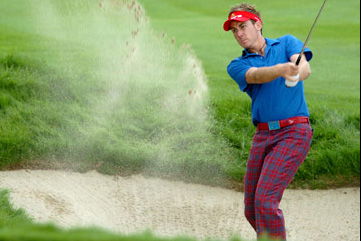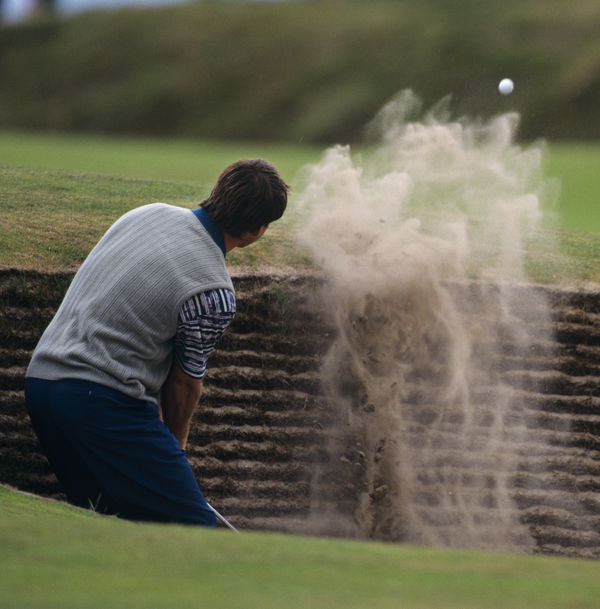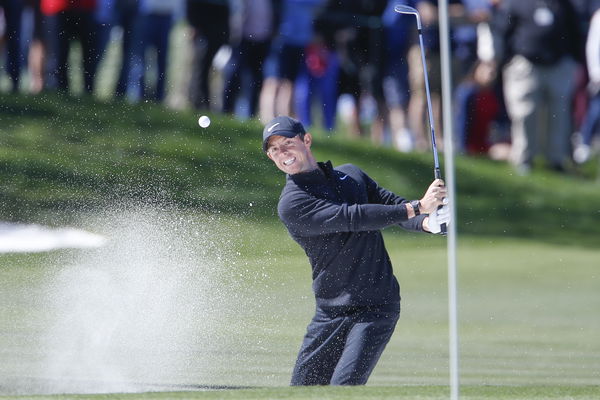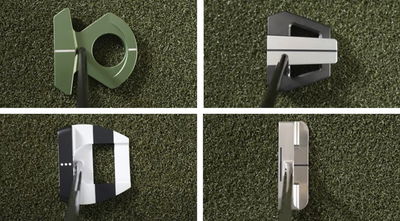Ten of the Best: Bunker rules, etiquette and tips
What are they and how do I get out of them? All will be revealed...

For the benefit of all those real beginners we're here to give you some information and advice about those sandy traps on a golf course that seem to swallow up ball after ball when you're starting out in the game.
So, we've compiled ten of the best essential rules, etiquette know hows, and tips to give you some sort of guidance as to what they are and how to deal with them.
Let’s first deal with what bunkers actually, why they are there, how to look after them, and most importantly how to escape from them.
1. What are bunkers?
The sand bunker is, according to the Rules of Golf (Section II definitions), ‘a hazard consisting of a prepared area of ground from which turf has been removed and replaced with sand or the like (sometimes volcanic dust). Grass-covered ground bordering or within a bunker is not part of the bunker, the margin of which extends vertically downwards but not upwards. A ball is in a bunker when it lies in or any part of it touches the bunker."
2. Why are they there?
Originally early courses were laid out beside the sea, hence there was much sand among the turf creating an extra degree of difficulty.
It was decided that even though a ball came to rest on sand it should be ‘played as it lies’ and if you didn’t like it you could move it to a better spot nearby but you had to pay a forfeit (a penalty stroke).
Eventually as more courses were built inland and sand disappeared from the landscape, it was decided to re-create the hazard by introducing sand to natural and unnatural hollows.
Eventually they have become more sophisticated with sheer, rivetted faces made of layers of turf and more shallow fairway varieties bordering fairways, placed by course designers to put a premium on accuracy.
3. What can I move in a bunker?
Small stones often find their way into bunkers which can damage your equipment as well as possibly injure you or someone standing nearby. Look out for Local Rules on the back of the scorecard to see if you can remove them from around the ball.
Usually leaves, sticks, banana skins, apple cores etc., are not regarded as items which can be removed though you can take relief from holes made by burrowing animals (not their footprints) as long as the ball remains in the hazard.
4. In what condition should I leave a bunker?
The bottom line is that you leave a bunker in the condition you expect to find it just like if you let your mate borrow your driver.
This is all part of the etiquette of golf that, when starting out in the game, needs to be studied and adhered to so everyone can have a relaxed enjoyable experience.
When you have played your shot, smooth the surface with the rake provided pulling the sand from the centre up to the edges so it can fall back naturally towards the centre.
5. Where do I leave the rake?
The Rules of Golf legislators also ‘recommend’ that "the rake is laid down outside bunkers in a location where it will least likely affect play."
This recommendation can be traced to Decision 20-3d/2, which deals with a ball coming to rest against a rake within a bunker. In this decision, the ball moved when the rake was removed and Rule 24-1 requires the ball to be replaced.
However, in this case, the player was unable to get the ball to stay at rest on the spot where it had originally come to rest or anywhere else within the bunker not closer to the hole. As a result the player had to drop behind the bunker, under a penalty of one stroke.
While it’s accepted that if the ball strikes a rake outside of a bunker, by its proximity to the bunker, the ball could very well end up in the bunker, but it might not. Also, we don't know where the ball would have gone had it not struck the rake.
While it may seem unfair to have a ball hit the rake and it end up in the bunker, wouldn’t you rather play the bunker shot than be forced to take a penalty stroke and play over the bunker?
6. How do you get out of them?
Dozens of books have been written and millions of words spoken on bunker play but basically, escape from the deeper ones, beside a green, is down to technique.
Use the club design for the purpose – the sand wedge – which has a bulbous flange on the bottom (the sole) and was originally designed by Gene Sarazen in the 1930s to help lift the ball out on a cushion of sand.
But remember bunkers are a hazard and you are not entitled to ground your club (touch the surface) before you play your shot and until the ball has finally emerged from the hazard.
Before you read what we have to say on bunkers have a look at how Sergio Garcia escapes the sand, who uses a simple but effective method.
First create a solid foundation by shuffling your feet into the sand, the line of the toes aiming slightly left of your intended target (the flag stick). Grip down the handle a little and lay the face of the club so the leading edge aims at the target, then re-grip.
The secret is not to scoop the ball out but to slap the sand in a controlled but aggressive out-to-in swing, with the sole of the open-faced club, ensuring you follow through. If you strike the sand two inches behind the ball, it will tend to pop out almost automatically.
7. What about fairway bunkers, when I need distance?
The secret here is to swing within yourself. Again shuffle your feet into a solid foundation and grip the club down the shaft a little.
Phil Mickelson focuses on casting his wrists during the swing in his fairway masterclass so take a look, then have a read of our tips.
If the lip is shallow on the bunker you can take as much as a 5- or 7-wood but remember to swing easily and concentrate on nipping the ball off the surface.
Concentrate on the front of the ball (nearest the target) as you swing. This will help achieve a shallower swing path and gather up less sand.
8. Even the professionals get it wrong sometimes
Even if it takes you weeks or even months to get comfortable escaping bunkers, don't worry, even the professionals falter, just like poor old Thomas Bjorn did in the 2003 Open Championship.
The Dane was leading the tournament with just a few holes left, came to the 16th bunker and the rest as they say was history. So when you're playing your third consecutive shot in the sand just think... it could well be worse.
9. Make a mockery of 'tough' bunker shots
If the ball is partly buried or plugged in the sand,(as seen in the right-hand photograph) use your sharper edged pitching wedge, close (yes ‘hood’) the face and chop down hard just behind the ball. Again it should pop out but with little spin and will tend to roll further. So allow for this.
When you're faced with a 30-40 yard bunker shot then you want to keep your body and stance slightly open, address the clubface closed and give it a three-quarter swing.
A more unusual one that you might not get very often but could cause you some serious problems is when your feet are outside the bunker when taking a bunker shot. Over-flex your legs and stand further away from the ball to give yourself a bit more room to swing your arms through.
Give these drills a go when practising and when you're on the course and these nightmare shots will be as easy as pie soon enough.
10. Drills for practice
There are quite a few drills for practising bunker shots but when I met up with PGA professional Graeme Davies, he showed me one that was so simple I didn't believe him, but it actually works!
Draw a line in the sand around your ball (as seen in the right-hand photograph) and try and get rid of the circle completely with your stroke. It should naturally make you hit the sand before the ball and you'll be surprised at how consistently it comes out the trap. Give it a go, this really is a top drill.
If you want any other drills check out our bunker practice drills instructional series for more help.
Originally published May 2003, updated September 2013.
Want any more articles on bunkers? Then check out...
Toughest bunker shots instructional series
Learn from Nick Faldo to pkay out the bunker
Luke Donald's slow motion bunker play











